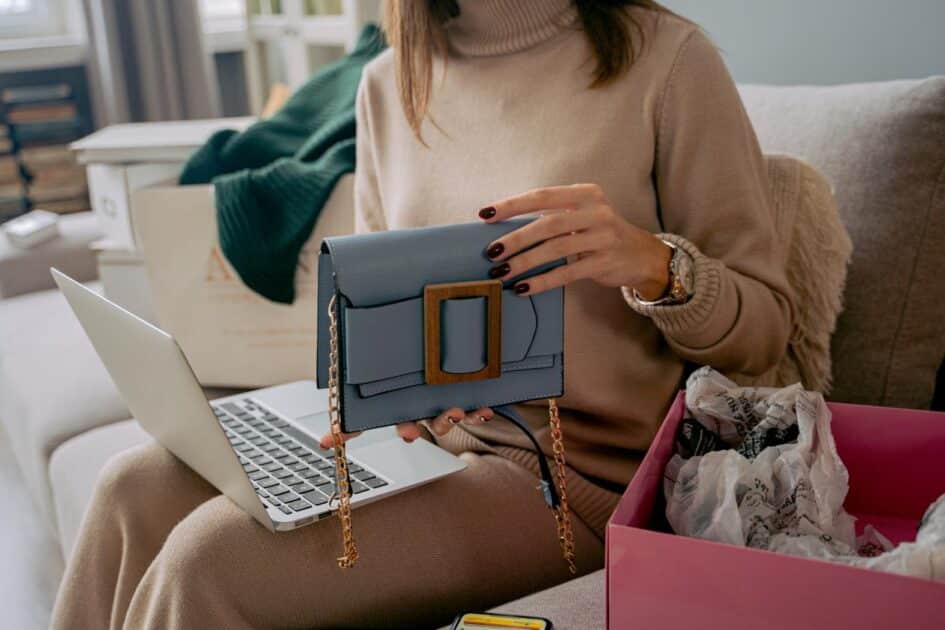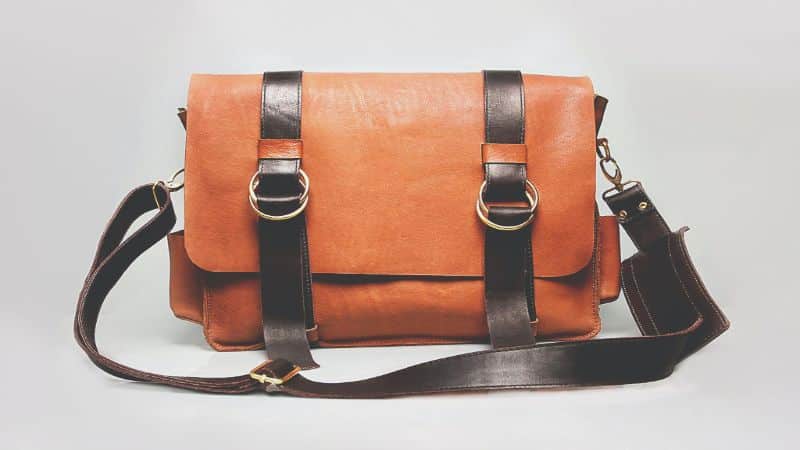Ever found yourself eyeing a designer handbag and wondering if it’s the real deal? You’re not alone. The market’s flooded with knock-offs, and it’s tougher than ever to spot the fakes. That’s where handbag authentication comes in, your secret weapon to ensure you’re getting what you pay for.

But how do you get a handbag authenticated? Don’t worry, it’s not as daunting as it sounds. Whether you’re a seasoned collector or new to the game, understanding the authentication process is key to making informed purchases. Let’s dive into the world of luxury handbags and discover how to verify their authenticity.
What is Handbag Authentication?
Imagine you’ve just found a designer bag at an amazing price. But how do you know if it’s the real deal? Handbag authentication is the answer. It’s a process used to verify the authenticity of designer handbags. This not only protects your investment but also supports legitimate businesses and fights against the illegal counterfeit market.
Authentication takes various forms, from expert examination to certificates. Experts examine materials, craftsmanship, stitching, logos, and hardware. They may use tools or magnifying instruments to inspect the fine details that distinguish real from fake. High-end handbags often come with serial numbers, authenticity cards, or specific hardware engravings that aid in this process.
In some cases, you might use online services that specialize in handbag authentication. You’ll send photos or, in some scenarios, the actual bag for a thorough check. These services often provide a certificate of authenticity if your bag is genuine. Remember, the cost can vary depending on the service provider and the level of examination required.
To authenticate a handbag properly, it’s essential to:
- Inspect the quality of the material. Authentic bags are generally made with high-quality leather, fabric, and metal.
- Check for brand-specific characteristics. Logos, hardware, and stitching should be consistent with the brand’s standards.
- Look for proof of authenticity. Certificates, serial numbers, and authenticity cards are strong indicators of a genuine bag.
- Consult with an expert. They have the trained eye and experience to spot fakes.
Serial numbers and authentication cards are not foolproof – forgers often replicate them. That’s why professional authentication remains the most reliable method to ensure you’re getting a genuine article. Remember, a true luxury handbag is a work of art and craftsmanship. Recognizing that value goes beyond its price tag – it’s about appreciating the heritage and effort behind every stitch.
Why is Handbag Authentication Important?
When you invest in a luxury handbag, you’re not just buying a fashion accessory; you’re buying a piece of history, craftsmanship, and status. Authenticity verifies that history. Handbag authentication upholds the value—both monetary and sentimental—of your investment. Without it, the lines between the real deal and a well-made fake become dangerously blurred.
Counterfeits aren’t just illegal; they often fund shady operations. By ensuring authenticity, you distance yourself from these unethical practices. Plus, imagine the frustration after flaunting your handbag only to discover it’s a fake. The embarrassment can sting even more than the loss of hard-earned cash.
The presence of numerous knock-offs has made it tougher to identify authentic pieces. Authentication acts as your shield, safeguarding your purchase decisions. Knowing that you own an authentic handbag grants peace of mind and conveys a message of reliability and confidence to others, whether you’re gifting, selling, or buying.
Resale values are significantly impacted by authenticity. If there ever comes a day when you decide to part with your luxury handbag, possessing proof of authenticity ensures you get the right price. No authentication likely means a steep drop in potential resale value.
Remember, quality and durability are the hallmarks of genuine luxury items. Authentic handbags are designed to last, often becoming heirlooms passed down through generations.
By getting your handbag authenticated, you become part of an exclusive club that cherishes the true essence of luxury. It’s not just about the label—it’s about joining a lineage of tastemakers and trendsetters who know the worth of what they carry on their arm.
The Process of Handbag Authentication
When you’re ready to verify the authenticity of a luxury handbag, the journey begins with selecting a reputable authenticator. Research is key. Choose experts with a track record of identifying genuine articles from fakes. They should have extensive knowledge of brands, models, and the ever-evolving techniques counterfeiters use.
Prepare to provide detailed photos of the handbag. Focus on:
- Serial numbers
- Brand stamps
- Hardware
- Stitching
- Materials
Ensure the pictures are clear and well-lit. Quality images allow authenticators to inspect minute details critical to verification.
Authenticators will scrutinize each photo. They’ll compare them to known standards set by the luxury brand. These standards encompass logo font, stitch count, hardware weight, and more.
Expect a serial number check. Serial numbers hold information about the bag’s origins – like a DNA test for luxury goods. No serial number? Don’t worry; it doesn’t automatically mean it’s a fake. Some vintage pieces or specific models may not have one.
Authentication isn’t instant. Timeframes vary from a few hours to several days. Patience ensures that each aspect is thoroughly evaluated.
« How to Get Designer Handbags for Cheap: Unlock Big Savings with Cashback Sites
Best Black Handbag Picks: Unveiling the Top Chic and Luxe Designs »
Be prepared for questions. Authenticators may need more context about the bag’s history or where it was purchased. Your cooperation can clarify uncertainties and speed up the process.
Costs are part of the equation too. Prices for authentication services vary based on the complexity of the task. In general, you’re looking at fees anywhere from $20 to $100. It’s a small price to pay for the assurance you gain.
Gather all necessary documentation before starting. Receipts, warranties, or previous authentication certificates add weight to the process, especially if the handbag’s history is murky.
Remember, authentication does more than just verify genuine luxury. It ensures you can wear your handbag with confidence, knowing it’s the real deal. Whether for personal satisfaction or future resale, it’s a step worth taking.
How to Find a Reliable Handbag Authentication Service?
When you’re on the hunt for a trustworthy handbag authenticator, start by doing your homework. Research is key. Search for services with stellar reviews and testimonials from satisfied clients. Users’ experiences often paint the most accurate picture of what to expect.
Look for experts who specialize in luxury handbags. Their expertise should be apparent through their in-depth knowledge of brands and their nuances. A legitimate service typically lists the types of handbags they authenticate, providing some reassurance of their proficiency.
Check their accreditation. Reputable authenticators should have recognitions or certifications that validate their skill in distinguishing genuine articles from fakes.
Consider the turnaround time. Reliable services understand that time is of the essence and usually offer a clear timeframe for when you can expect results. Speed should not compromise accuracy, however.
Inquire about the process. A transparent service will walk you through their authentication steps. They should be open about how they examine a handbag and determine its authenticity.
Examine their customer service. A service that values their clients will have responsive customer support to address your inquiries promptly. This is a good indicator of professionalism and reliability.
Don’t overlook the cost factor. Fees should be reasonable and reflect the depth of service provided. Yet, be cautious of prices that seem too good to be true as they could signify a less thorough authentication process.
Lastly, trust your instinct. If a service seems off or doesn’t communicate effectively, it’s wise to continue your search. Your confidence in the authenticity of your luxury item is paramount.
Tips for Spotting Fake Handbags
Being savvy about handbags means knowing how to spot the fakes. Authenticity spells the difference between a treasured item and a disappointing imposter. When you’re on the hunt for the real deal, keep these pointers in mind.
Firstly, scrutinize the craftsmanship. Luxury handbags tout impeccable stitching. Uneven or sloppy seams scream fake. Check the weight of the hardware – authentic pieces usually come with heavier, sturdier metal parts. Logos also tell a story; an authentic bag will have consistent and precise branding.
The material itself does not lie. Genuine leather has an unmistakable feel and smell. Counterfeits often use cheaper materials that may look right at a glance but fail the sensory test. Also, consider how the leather ages. Quality leather should develop a patina over time, whereas fake products deterior’t age gracefully.
Serial numbers and authenticity cards are clues. They should match the brand’s established format. Be wary, though – sophisticated fakes might also come with convincing documentation. Always cross-reference with the brand’s official resources.
Another key factor is the price. If it seems too good to be true, it probably is. Luxury comes with a cost, and legitimate retailers rarely offer steep discounts. Lastly, arm yourself with knowledge about the brand. Each luxury house has its own signatures – knowing these can help you spot discrepancies in fakes.
When in doubt, seek expert opinion. Professionals can often identify nuances that escape the untrained eye. Remember, the more you know, the harder it is to be fooled. Keep these tips as your arsenal against counterfeit handbags, ensuring that your collection remains pristine and genuine.
Conclusion
Getting your handbag authenticated is more than just a formality; it’s about making sure you’re holding a piece of legitimate luxury. You’ve learned the ins and outs of spotting fakes and the importance of those little details that make a big difference. Remember, it’s not just about the bag—it’s about the story, the craftsmanship, and the confidence that comes with knowing you’ve got the real deal. Whether you’re a collector, a fashion aficionado, or looking to maintain your bag’s value, taking that extra step for authentication is definitely worth the effort. Carry your handbag with pride, knowing that it’s the genuine article, and let that assurance reflect in every step you take.
Frequently Asked Questions
What is the significance of handbag authentication?
Handbag authentication is significant because it verifies the history, craftsmanship, and value of luxury handbags. It serves as a shield against the rampant counterfeit market and ensures the purchase of an authentic product.
Why is it difficult to identify authentic luxury handbags?
Identifying authentic luxury handbags is difficult due to the high number of counterfeit products in the market that closely mimic the design and appearance of genuine items.
How does authenticity affect the resale value of luxury handbags?
Authenticity directly affects the resale value of luxury handbags as verified authentic items maintain their worth over time, while counterfeit or dubious pieces lose value and may not be resalable at all.
What are some tips for spotting a fake handbag?
Tips for spotting a fake handbag include checking the craftsmanship, the weight of the hardware, the clarity and accuracy of logos, the material quality and its aging process, the presence of serial numbers and authenticity cards, assessing the pricing, and knowing the brand’s unique signatures.
How does handbag authentication contribute to buyer confidence?
Authentication contributes to buyer confidence by providing peace of mind that the handbag is a genuine article and protects the buyer from potential financial and reputational damage associated with counterfeit goods.







